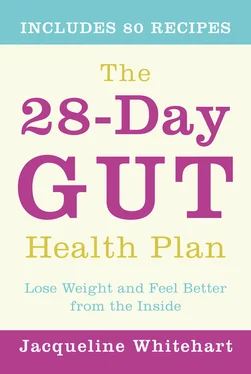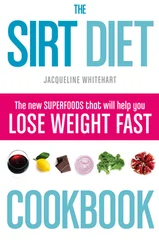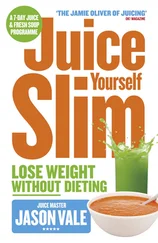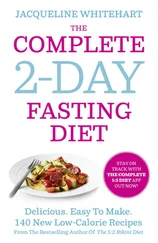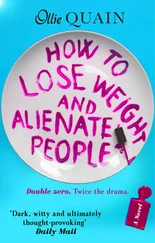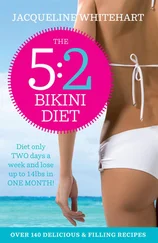SAFE FOODS
These are the foods that you know are 100 per cent safe to eat at any stage of the plan.
Meat, fish and eggs
Chicken
Turkey
Eggs
Fish
Prawns
Salmon
Tuna
Tofu
Dairy and alternatives
Lactose-free milk
Almond milk
Soya milk
Coconut milk
Butter
Cheddar
Feta
Brie
Goat’s cheese
Mozzarella
Swiss cheese
Parmesan
Vegetables
Carrot
Bean sprouts
Green beans
Beetroot
Pak choi
Celery
Celeriac
Chives
Spring onion (green part only)
Sweetcorn
Courgette
Cucumber
Fennel
Ginger
Lettuce
Rocket (arugula)
Peas
Potatoes (without skin)
Spinach
Sweet potato
Butternut squash
Swiss chard
Water chestnuts
Fruit
Avocado
Banana
Blueberries
Orange
Satsuma/clementine
Lemon
Lime
Grapes
Kiwi
Melon
Pineapple
Pomegranate seeds
Raspberries
Strawberries
Rhubarb
Nuts and seeds
Almonds (ground almonds)
Walnuts
Hazelnuts
Macadamia nuts
Peanuts
Pecans
Pine nuts
Chia seeds
Pumpkin seeds
Sesame seeds
Sunflower seeds
Grains and cereals
Oats
Rice
Buckwheat
Cornflour (cornstarch)
Oatbran
Polenta
Quinoa
Fats and Oils
Mild olive oil
Olive oil
Extra-virgin olive oil
Confectionery and sugar
Dark chocolate
Honey
White sugar
Brown sugar
Maple syrup
Herbs and spices
Basil
Chives
Coriander (cilantro)
Ginger
Parsley
Rosemary
Tarragon
Thyme
Cinnamon
Cumin
Five spice
Star anise
Turmeric
Asafoetida
Sauces
Mustard
Tamari (wheat-free) soy sauce
Maple syrup
Balsamic vinegar
Apple cider vinegar
Peanut butter
Mirin
Worcestershire sauce
Fish sauce
HEALING FOODS
If you want foods that not only are ‘safe’ but also help heal the gut from the inside then these are my absolute top foods. Some, like kombucha, help reduce inflammation of the gut, some improve the bacterial balance and others help the digestive tract run more smoothly.
Apple cider vinegar and balsamic vinegar
Both these vinegars taste amazing and are so versatile. I make a simple salad dressing with both and it is absolutely delicious. Apple cider vinegar and authentic balsamic are fermented foods. Fermented foods are natural sources of really good gut bacteria. These bacteria complement those found in probiotics and help you gain the best balance. Both vinegars also contain acetic acid (it’s what makes them sharp) which helps lower the sugar that we absorb from our food. Here is my perfect go-to salad dressing …
Everyday Healing Vinaigrette
Simply mix together 1 tbsp extra-virgin olive oil, 2 tsp apple cider vinegar, ½ tsp balsamic vinegar, ½ tsp English mustard and a generous seasoning of salt and black pepper.
Kombucha
Kombucha is a fermented tea drink. It naturally inhibits the growth of harmful bacteria and has a soothing and anti-inflammatory effect on the gut lining. If you think you have a leaky gut and it is making inflammatory conditions such as arthritis and acne worse, then kombucha may be beneficial for you. There are some amazing online shops selling kombucha drinks that are worth hunting down. And if you find the drink helpful, you can then go on to make your own easily and relatively inexpensively.
Tamari wheat-free soy sauce
Instead of standard soy sauce, you can now buy tamari soy sauce from most supermarkets. It’s a fraction more expensive but not disastrously so. Naturally fermented and wheat-free, it adds different bacterial strains to the probiotic mix.
Psyllium husks
Psyllium is a prebiotic powder that you can buy from health-food shops. I recommend it as it’s the purest and simplest way of adding prebiotics to your diet. Prebiotics are a special type of fibre that complement probiotics as they encourage the growth of good bacteria in your gut. Think of prebiotics as food for the good bacteria. Once you have ‘sown the seed’ of probiotics, prebiotics will encourage the good bacteria to grow and flourish. Additionally, the fibre element helps keep your digestive system running smoothly and relieves both diarrhoea and constipation symptoms.
I use psyllium in gluten-free bread recipes, but you can also dissolve a teaspoon in water or juice. It is a very concentrated fibre source, so it is important to drink at least two glasses of water or juice with every teaspoon.
Olive oil
The more natural the oil or fat the better. For this reason the ONLY fats I use in cooking are olive oil and butter. Olive oil is by far the least processed of the oils we use and has a very high percentage of heart-healthy monounsaturated fat. You can get olive oil in three varieties (and I use them all): ‘normal’ olive oil is my go-to oil for frying and general cooking, extra-virgin olive oil is fabulous in salad dressings and mild (or light) olive oil is great for baking or anywhere you just need an oil without the olive oil flavour.
HERO FOODS
When you’re avoiding whole food groups, it’s easy to feel that you’re cutting out all the flavour and excitement from your food. After all, if you cut out meat, tomatoes, onion and wheat, what is left?
Actually, there is plenty, but to avoid bland food you have to be a little bit clever with your food swaps. You’ll find that I use all of the swaps listed here in the Gut-Health Plan Recipes and they are key to moving forward and living with food intolerances, whether just for the short term or if you find you need to avoid these foods for the foreseeable future.
Lactose-free milk
Lactose-free milk can now be found in any supermarket; it’s only a little bit more expensive than your standard semi-skimmed. What’s more, you can’t taste the difference, so it’s one of the easiest swaps ever. There are also lactose-free yogurts and ice cream but they are a little bit harder to find.
Onions and garlic
Onions and garlic are perhaps the hardest foods to avoid. If you think about it, the vast majority of our meals contain them in some form or another. If you’re buying pre-prepared food, it’s practically guaranteed. The problem is exacerbated by the fact that only a small quantity can set off an intolerance, so we need to be very careful indeed.
Garlic oil
Garlic oil is extra-virgin olive oil infused with garlic. Unlike garlic powder or pastes, the oil picks up the flavour of the garlic but without the troublesome ‘gassy’ molecules. This is because the garlic is not soluble in the oil, but it is in water. Garlic oil is brilliant because it can be used in practically any dish that requires garlic. Simply substitute 1 teaspoon of garlic oil for 1 clove of crushed garlic. Garlic oil is completely safe for sensitive tummies. You could also try chilli oil as a great way to add heat to a dish without the chilli.
Celery
Celery should be your go-to onion substitute in many dishes. It has a slightly milder flavour than onion. But if you add one or two chopped celery sticks in the place of an onion in a dish, particularly a traditional British dish like Cottage Pie (see here), then you won’t notice the difference.
Asafoetida
If you’ve not heard of asafoetida before, you are not alone. It’s not a commonly used spice outside of the Indian sub-continent. A yellow spice, also called ‘hing’, it can be purchased cheaply and easily from the supermarket. In cooking it adds a mild onion or leek flavour to any dish. You need about a teaspoon as a substitute for an onion and it does add a yellow colour. It really is fantastic for adding warmth and depth of flavour to a dish. I’m a total convert and use it in many dishes.
Читать дальше
